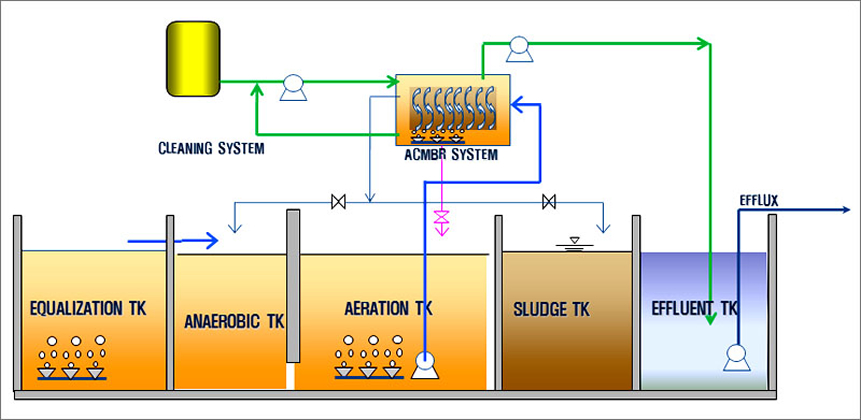ACMBRHyDAF
Characteristic
- Unlike the existing MBR method, cleaning is possible without a separate lifting device and the cleaning time is short.
(Installation cost is cheaper than the existing MBR method, construction time is shortened and maintenance is easy.) - It can be installed in the old biological treatment system without additional civil engineering work.
- Since the washing water is circulated and cleaned automatically, the washing efficiency is improved and the life of the membrane is long.
- As it is installed separately, rather than installed in an aeration tank, like the MBR method, it is possible to prevent sludge bulking and loss of sludge caused by PIN-FLOC and to ensure stable water quality.
- Independent nutrients such as nitric acid bacteria can be maintained at high concentrations, so it is efficient for nitrification process and can operate at low FM ratio.
Comparison of ACMBR and Existing Recreational MBR Method
Sortation |
ACMBR method |
Long-term Ppyrotechnics |
Contact oxidation method |
|---|---|---|---|
Advantage |
|
|
|
Disadvantages |
|
|
|

